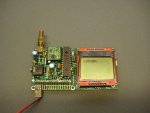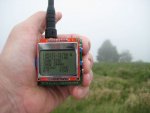Hi there!
I've been trying some picaxe pics on controlling NOKIA 5110 LCDs that use the Philips PCD8544 LCD driver.
I have some success with 18m2. I've tried some examples online like this one: http://homepage.ntlworld.com/c.lewis19/nokia.htm.
Problem is the lack of libraries, and the limited memory I can't even register the full set of characters with the 256k limit on eeprom.
Is there a better way using a 18m2 to work with these LCDs?
And if not, what would be the equivalent arduino chip (library capable) to use?
thank you
I've been trying some picaxe pics on controlling NOKIA 5110 LCDs that use the Philips PCD8544 LCD driver.
I have some success with 18m2. I've tried some examples online like this one: http://homepage.ntlworld.com/c.lewis19/nokia.htm.
Problem is the lack of libraries, and the limited memory I can't even register the full set of characters with the 256k limit on eeprom.
Is there a better way using a 18m2 to work with these LCDs?
And if not, what would be the equivalent arduino chip (library capable) to use?
thank you


